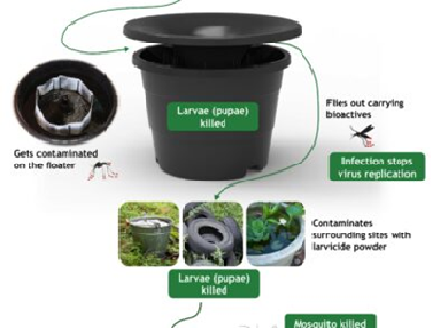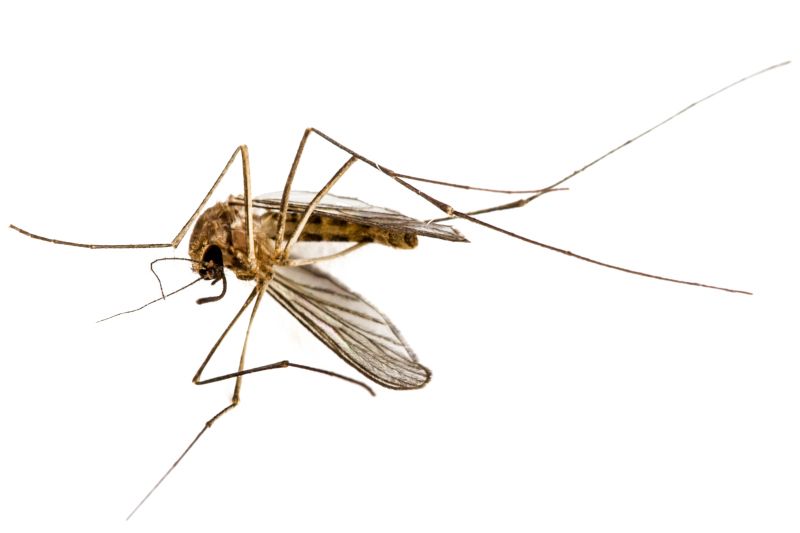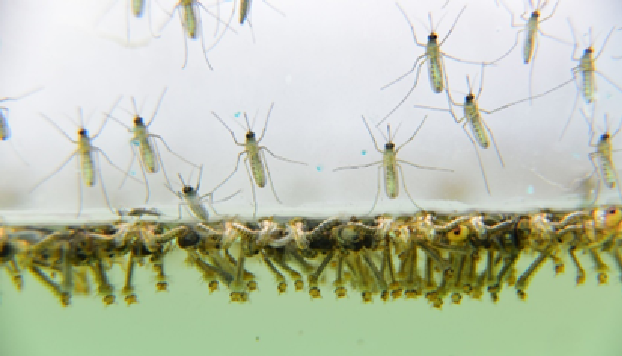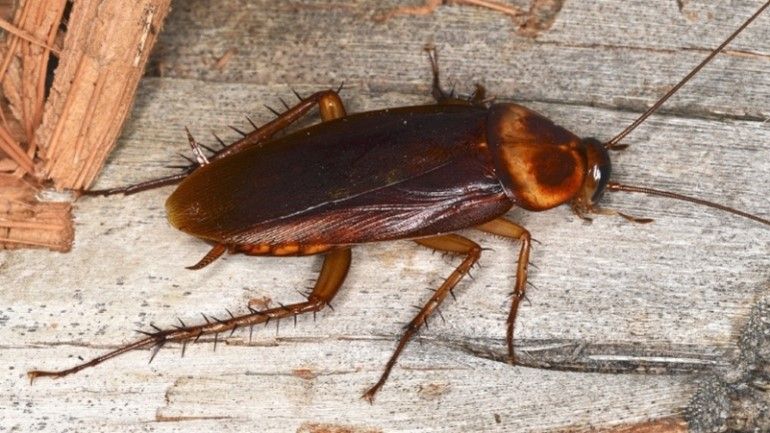Blog

Protecting a Landmark: Pestguard Successfully Fumigates St. Petersburg High School March 2025 – St. Petersburg, FL Pestguard Commercial Services Inc., Florida’s premiere privately owned structural fumigation & pest control company, has successfully completed the comprehensive fumigation of St. Petersburg High School , a historic educational facility located in Pinellas County. The project, which began on March 17, 2025, was finalized on schedule, with zero complications, and achieved complete eradication of Drywood termites—preserving both the structural integrity and educational continuity of this iconic Florida landmark. A Building of Historic Significance Founded in 1898 and relocated to its current building in 1926, St. Petersburg High School is one of Florida’s oldest public high schools. Known for its Collegiate Gothic architecture and enduring presence in the community, the structure is not only functional but historically significant. As such, any restoration or pest management must be conducted with great precision and sensitivity. When school officials identified signs of termite damage in the building’s structural wood, they turned to Pestguard for a solution that could both eradicate the infestation and safeguard the building’s legacy. Pestguard was selected for its 32+ years of industry experience , reputation for thoroughness, and commitment to safety and accountability. Preparing for a Full-Structure Fumigation The project began with a detailed site assessment , during which Pestguard’s licensed fumigation team conducted visual inspections, identified potential points of ingress, and worked closely with school administrators to plan for a safe and efficient process. Given the age and architectural features of the school, extra care was taken to ensure structural sealing and gas containment would be effective. Pestguard’s in-house team, not subcontractors, handled every aspect of the job—from pre-fumigation planning to tenting and execution. This eliminates communication gaps and ensures every technician on-site is fully accountable to Pestguard’s standards. Execution and Real-Time Monitoring On March 17, Pestguard began the full-structure fumigation process using Sulfuryl Fluoride , a trusted fumigant known for its effectiveness in eliminating Drywood termites without leaving residue. What set this project apart was Pestguard’s use of continuous gas level monitoring technology. Specialized equipment tracked the concentration of fumigant in real time, allowing technicians to ensure consistent levels were maintained throughout the treatment window. Most notably, Pestguard achieved 200% of the required fumigant exposure threshold —a benchmark that guarantees complete eradication of active Drywood termite colonies. Safety First: No Compromises The health and safety of students, faculty, and maintenance staff were top priorities throughout the project. Pestguard implemented strict re-entry protocols in accordance with all Florida Department of Agriculture and Consumer Services (FDACS) regulations. Clearance testing was conducted before the structure was reopened, ensuring no fumigant remained. Because Pestguard does not use subcontractors, its team maintained complete oversight over every phase of the project, from crane and man lift operations, tent installation and fumigant release to monitoring and final clearance. A Milestone in Commercial Fumigation “We are honored to have been chosen for this important project,” said Roger Mensing , President of Pestguard. “St. Petersburg High School is not just a school—it’s a community landmark. Our team approached this job with the respect, care, and attention it deserved. Completing the project on schedule, with no complications and full termite elimination, is something we’re incredibly proud of.” Why Pestguard? 32+ years of experience in structural fumigation No subcontractors —in-house professionals ensure accountability Precision monitoring using real-time gas level tracking Proven safety protocols in compliance with all regulations Trusted by schools, government buildings, and commercial facilities This project reaffirms Pestguard’s position as a leader in Florida’s pest control industry, delivering scientifically backed, expertly executed treatments to protect properties of all types—from private homes to public landmarks. Learn more about Pestguard’s fumigation capabilities at pestguardtermite.com or call 941-358-3863.

Subterranean termites are a significant concern for homeowners and businesses alike, with their ability to cause extensive damage to wooden structures. Protecting against these pests often involves the use of liquid barrier treatments or baiting systems strategically installed around properties. However, hurricanes and flooding present unique challenges to these protective measures. The Effects of Hurricanes and Flooding on Termite Protection Systems 1. Disruption of Liquid Treatments: Liquid termite treatments are typically applied to the soil around a structure, creating a protective barrier that deters termites from entering. When flooding occurs, especially during hurricanes, this barrier can be compromised. Excessive water may dilute the treatment or wash it away entirely, reducing its effectiveness and leaving your property vulnerable to infestation. 2. Damage to Bait Stations: Termite baiting systems consist of strategically placed stations containing bait that termites find attractive. Flooding can submerge these stations, potentially damaging the stations and the bait or disrupting their distribution. Additionally, debris carried by floodwater can dislodge or bury the stations, making them inaccessible to termites or difficult to locate and service. 3. Impact of Salt Contamination: Hurricanes and flooding, particularly in coastal areas, often introduce saltwater into the soil. Salt contamination can significantly impact the effectiveness of termite bait stations. Subterranean termites avoid salt-contaminated areas because salt is toxic to them in high concentrations. If bait stations become saturated with saltwater, termites will not approach them, rendering these stations ineffective. Furthermore, saltwater exposure can corrode metal components or degrade certain materials used in bait stations, reducing their durability and functionality over time. This underscores the importance of inspecting and replacing any compromised bait stations after a flood. 4. Foundation-Specific Vulnerabilities: Flooding impacts termite protection differently depending on the type of foundation. Homes with crawl spaces may face increased moisture retention, creating ideal conditions for termites to thrive. Basements, especially those that flood, can lead to waterlogged wood and compromised structures, providing easier access points for termites. For slab foundations, shifting soil or sediment erosion can break the protective barrier created by liquid treatments, necessitating immediate reevaluation of termite protection systems. 5. Increased Termite Activity Post-Flood: Hurricanes and flooding often create moist conditions that are ideal for subterranean termites. As soil dries out, termites may become more active and search for new food sources. This increased activity can accelerate the risk of structural damage if protective systems are compromised. 6. Structural Concerns Beyond Protection Systems: Flooded wood can soften and weaken, making it more attractive to termites even after treatment. Saturated or water-damaged wooden structures, such as beams or flooring, can become easy targets for termite infestation. Addressing this damage promptly by drying and repairing affected areas is critical to maintaining the integrity of termite protection systems.

Mosquitoes are more than just a summertime annoyance. They are vectors for diseases such as West Nile virus, Zika virus, dengue fever, and even malaria in some parts of the world. These diseases can have severe consequences, particularly for children, the elderly, and those with compromised immune systems. Therefore, controlling the mosquito population around your home isn’t just about comfort; it’s about safeguarding the health and well-being of those you care about. Mosquitoes are adept at finding breeding spots, often in areas that we may overlook. Common places include standing water in birdbaths, gutters, planters, and even small puddles. A single mosquito can lay hundreds of eggs in a tiny amount of water, leading to a rapid increase in the mosquito population. Without intervention, what starts as a minor inconvenience can quickly become a significant infestation. In addition to the health risks, a high mosquito population can significantly reduce your ability to enjoy your outdoor spaces. Gardens, patios, and swimming pools—areas meant for relaxation and fun—can become unusable if mosquitoes are prevalent. The constant need to swat away insects or apply bug repellent detracts from the enjoyment of being outside. This is why taking proactive steps to control mosquitoes around your home is not only a smart decision but a necessary one.

Mosquitoes, notorious for their ability to spread diseases like malaria, dengue, and Zika, are highly adaptable insects that thrive in various environments. Understanding where mosquitoes harbor is crucial for effective control and prevention efforts. Mosquitoes are most commonly found in areas with standing water, as this is where they lay their eggs. Stagnant water in ponds, marshes, or even small containers like flower pots, birdbaths, and clogged gutters can become prime breeding grounds. These insects are also attracted to natural water sources such as lakes, rivers, and swamps, where they can breed and find shelter. Beyond water, mosquitoes seek out shady, humid areas to rest during the day. Dense vegetation, tall grasses, and bushes provide the ideal hiding spots, offering protection from the wind and predators. In urban environments, mosquitoes often harbor in places like under decks, in sheds, and around yard debris where moisture accumulates. Mosquitoes are also known to take refuge in human-made structures, such as abandoned tires, rain barrels, and even inside homes, particularly in dark, damp areas like basements and bathrooms. Reducing mosquito populations involves eliminating these harboring areas by draining standing water, maintaining clean and well-trimmed yards, and ensuring homes are sealed to prevent entry. By addressing these key harboring areas, we can significantly reduce mosquito populations and minimize the risks they pose to human health.

As the warm months approach, we find ourselves eagerly anticipating time spent outdoors with family and friends. Whether it’s barbecues in the backyard, lounging by the pool, or simply enjoying the evening breeze, these moments are what make summer so special. However, the presence of mosquitoes can quickly turn these enjoyable experiences into uncomfortable or even dangerous situations. Not only are mosquito bites annoying and itchy, but these tiny pests are also known carriers of serious diseases that pose health risks to you, your family, and even your pets.








